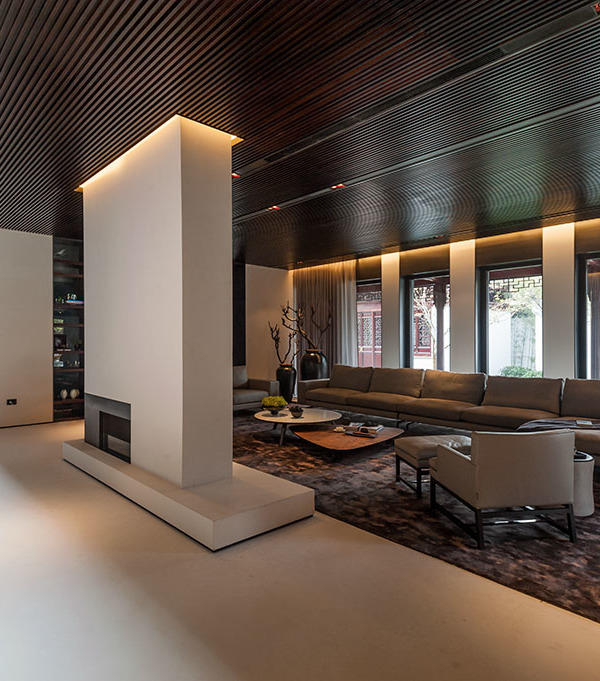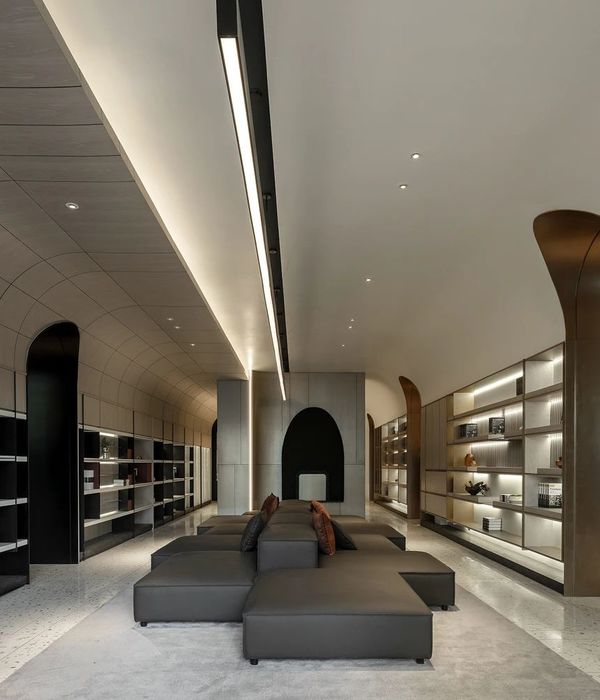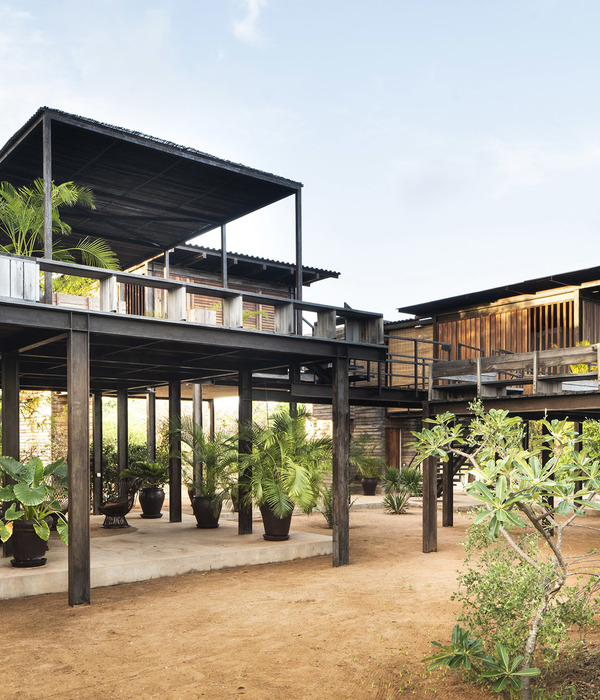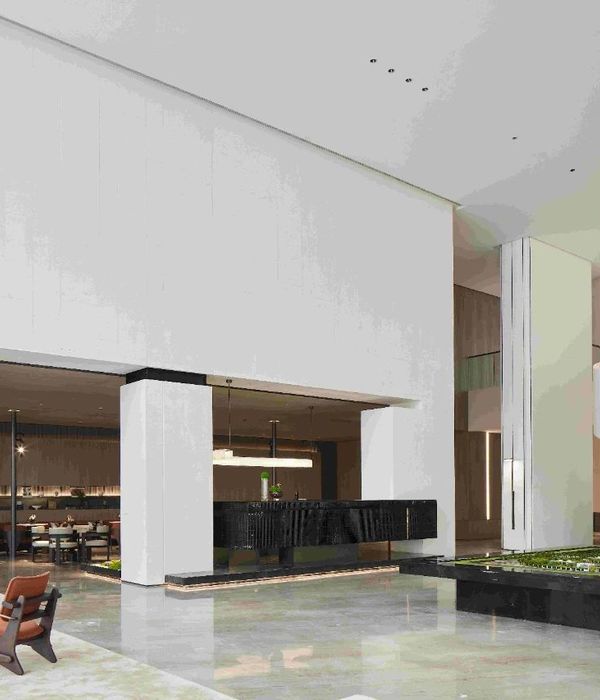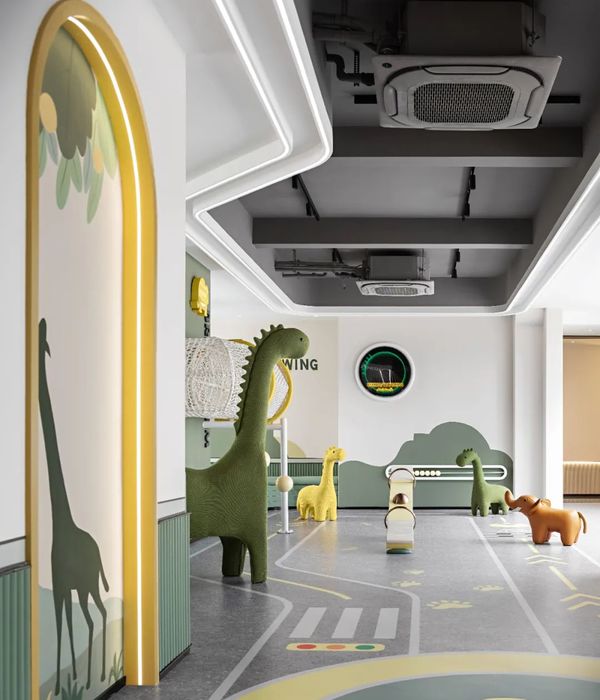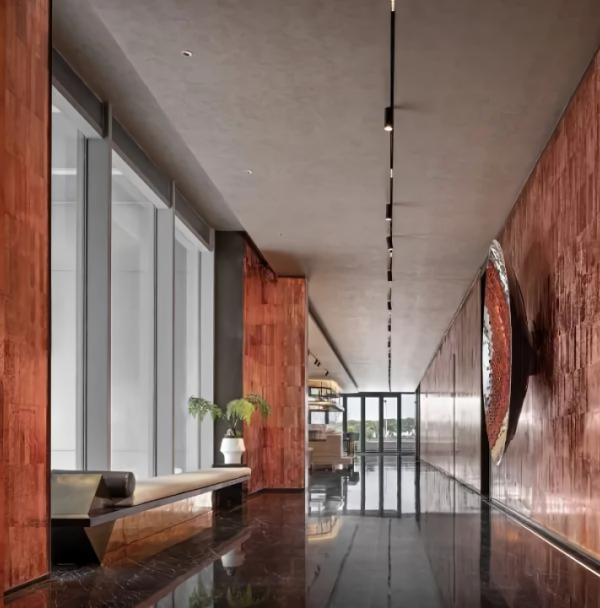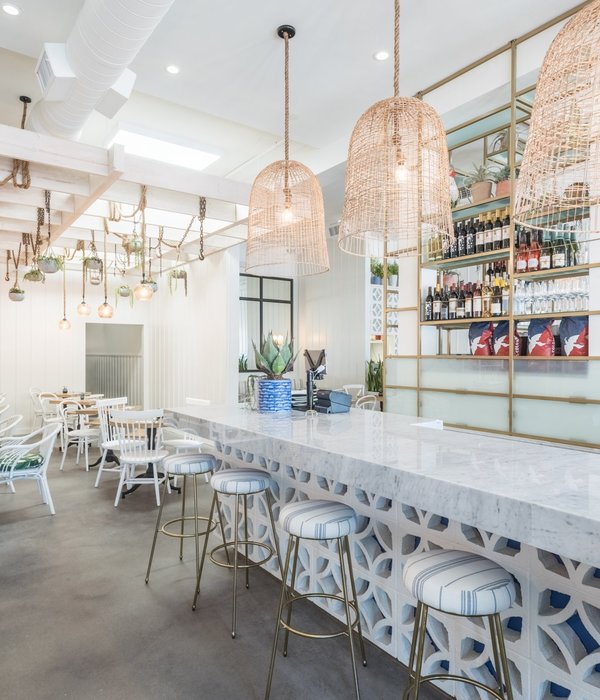豪华酒店运营商 NOT A HOTEL 在日本的佐木岛(Sagi Island)上推出了一组令人惊艳的最新度假胜地,名为 NOT A HOTEL 濑户内(Setouchi)。其设计灵感源自斯堪的纳维亚和日本之间长久以来在设计价值观上的有趣对话。酒店与佐木岛的群山相互交织,自然地融入了山脉之中,丰富的天然和当地材料的使用,强调建筑与自然的紧密联系。
Japanese hospitality group NOTA HOTEL has Partnered with BIG to expand the company’s existing six hospitality offerings across Japan. Located on a 30,000 m2 site on Japan’s remote Sagi lsland, NOTA HOTEL Setouchi brings three villas to the island’s southwestern cape with panoramic views of the Seto Inland Sea.
▼项目远眺,distant view rendered by MIR
日本酒店运营集团 NOT A HOTEL 与 BIG 的合作开始于 2022 年,致力于将该公司在日本现有的六处酒店继续扩展。项目的选址位于日本濑户内地区较为偏远的佐木岛,占地 30,000 平方米,三座别墅矗立在岛的西南角,尽享濑户内海的壮丽景致。NOT A HOTEL 濑户内项目预计 2024 下半年破土动工,该项目也丰富了 BIG 酒店系列的设计履历,其中包括位于瑞士布拉苏丝的爱彼钟表酒店、加拿大沃勒巴克岛(Vollebak Island)以及瑞典拉普兰(Lapland)树顶酒店的生物圈小屋。
The design for NOT A HOTEL Setouchi builds on the longstanding relationship between Scandinavian and Japanese design values. The luxury resort weaves naturally throughout the remote island’s mountains, incorporating natural and local materials while promoting a connection to nature.
▼鸟瞰,aerial view rendered by MIR
▼尽享濑户内海的壮丽景致,spectacular views of the Setouchi Searenderedby MIR
在过去的几十年里,日本一直以其精妙绝伦的自然景观、高端的设计、富于创新的建筑和前沿艺术而备受瞩目。而现在,在濑户内海地区,NOT A HOTEL 集合了日本独特的自然景观和人文资源。我们与 BIG 进行合作,在佐木岛上打造日本最奢华的别墅,向更多人打开通往濑户内海地区的魅力之门,让人们尽情领略这片风景的独特之美。—— Shinji Hamauzu, NOT A HOTEL 的 CEO 及创始人
In the last few decades, Japan has been attracting attention as a place to experience stunning natural landscapes as well as high-end design, innovative architecture, and cutting-edge art. The Seto Inland Sea area, where NOT A HOTEL SETOUCHI will be built, brings together all of these aspects of Japanese tourism into a single site. In partnering with BIG, we are creating one of Japan’s most luxurious villas on Sagi Island, which will be a gateway for more people to experience the charm of the Setouchi region.
— SHINJI HAMAUZU, CEO & FOUNDER, NOT A HOTEL
▼夜景,night view rendered by MIR
19 世纪初,随着日本向国际旅行者开放边境,斯堪的纳维亚设计与日本设计渊源由此展开。不久以后,斯堪的纳维亚的设计师开始纷纷涌向日本,被日式风格的简洁、对天然材料的推崇以及与自然融合的理念所吸引。这些特质恰好契合了 NOT A HOTEL 濑户内所倡导的设计理念。
The relationship between Scandinavian and Japanese design began in the 19th century, when Japan opened their borders to international travellers. Soon after, Scandinavian designers began visiting the country and quickly became fascinated by the Japanese style for its simplicity, use of natural materials and connection to nature – the same principles that guided the design ethos for NOT A HOTEL Setouchi.
▼外观概览,overall lookrenderedby LIT design
▼露天泳池,pool renderedby MIR
▼露天泳池,pool rendered by MIR
NOT A HOTEL 濑户内项目的总体规划着眼于保护和恢复地形的自然起伏。在施工开始前,第一个任务就是清理草地,并重新栽培了橄榄树、柠檬树等一系列本土植物,进一步凸显场地的自然美感。三座别墅(分别为“360”、”270″和“180”,根据其位置和对应的景观命名)特意融入了地形的自然轮廓,并与现有的道路和基础设施相协调。由于度假别墅分布在不同的海拔高度,从远处看,宛如一条丝带般曲折延伸,穿越整个场地。
The masterplan for NOTA HOTEL Setouchi prioritises restoration of the undulating terrain, where grass will be harvested before construction begins, while olive trees, lemon trees and other native vegetation will be reintroduced to further enhance the site’s natural beauty. The three villas – named ‘360,’‘270′ and ‘180’depending on location and corresponding views – intentionally blend into the landscape’s natural contours, aligning with existing roads and infrastructure. Spread across varying elevations, the resort appears like a ribbon winding through the site.
▼三座别墅如一条丝带般曲折延伸,three villas appears like a ribbon winding through the siterenderedby LIT design
在设计 NOT A HOTEL 濑户内时,我们并没有把某种设计理念强加于场地,而是通过探索、观察和理解地貌来推敲设计理念,设想我们该如何发挥这一独特而非凡的地形优势,确立体现日本传统建筑优雅之美的设计理念。放眼全球,日本是少数几个还在坚守工艺传统并对品质严格要求的文化。可以说,诚实简洁的结构和精挑细选材料极大的影响了日本的传统建筑和丹麦的现代建筑。也许这就是为什么每当我踏上日本的土地时,都有一种回家的感觉。NOT A HOTEL 濑户内将是一场实验,探索丹麦的简约风格与日本对细节和完美的追求之间的交融,两个国家的不同感性特质相互碰撞,或将激发出何种奇妙火花。- BIG 创始人兼创意总监 Bjarke Ingels
Our design approach for NOTA HOTEL Setouchi wasn’t about imposing our ideas on the site; instead, it involved exploring, observing and understanding the landscape. We envisioned how to best leverage this distinctive and remarkable terrain and fixed upon a design that mirrors the elegance of traditional Japanese architecture. Japan is one of the cultures in the world where commitment to craft and care for quality remains intact. The honesty and simplicity of the structure and careful choice of materials can be said to have greatly influenced the traditional architecture of Japan and the modern architecture of Denmark. Maybe that’s why when I go to Japan, I always feel like I’m coming home. NOTA HOTEL Setouchi will be an experiment in what happens when the sensibilities of both countries come together – the Danish desire for simplicity and the care and perfection of Japan.
—BJARKE INGELS, FOUNDER & CREATIVE DIRECTOR, BIG
▼三座别墅如一条丝带般曲折延伸,three villas appears like a ribbon winding through the siterenderedby MIR
每座别墅都独具新意,与其所处之地以及具体环境相得益彰。环形的“360”别墅坐落于海拔最高处,提供了 360 度全景式的濑户内陆地景观和海洋景观,而中央庭院的设计则为居住者提供了隐私保障。“270”别墅有着 270 度群岛景观,其设计巧妙地在泳池周围设置了漂浮岛般的沐浴空间,还设有桑拿房和露天火盆。而位于半岛顶端的“180”别墅则离海最近,其曲线设计与海岸线相吻合。住宅中央设有庭院,其中布置有缓坡、铺满青苔的小径和颜色随季而变的树木。
▼概念图解,conception diagram ©️ BIG
Each villa has distinct design characteristics that fit into their specific location onsite. The ring-shaped ‘360’ is perched at the highest altitude, offering literal 360-degree views of Setouchi’s land and seascape with a central courtyard for privacy. ‘270′ captures a 270-degree panorama of the surrounding archipelago, featuring bathing spaces arranged like floating islands around the pool alongside a sauna and open firepit. At the peninsula’s tip, ‘180’ is the closest to the sea, whose curvature follows the coastal landscape. The home includes an inner courtyard with gentle slopes, mossy pathways and trees that change colour with the seasons.
▼全景式的濑户内陆地景观和海洋景观,360-degree views of Setouchi’s land and seascape rendered by MIR (top) and LIT design (bottom)
▼景观庭院,landscaped gardenrenderedby MIR
这几座三到四居室的别墅融合了日本传统单层房屋的设计理念,采用了日本当地的材料。在保留了日式建筑元素的同时,根据用途进行了现代化的重新演绎,使得外墙、屋顶、墙壁和地板等基本要素兼具传统与现代的魅力。玻璃外墙作为日式屏风的现代演绎,将室外的景观带入到室内;而天然玄昌石制造的板块,则汲取了传统榻榻米的布局灵感。此外,承重的弧形粘土墙采用了传统的夯土技术,可以直接从现场取材。
The three- and four-bedroom villas reference the design of traditional Japanese single-story houses, incorporating materials local to Japan. The essential elements of the homes – the facade, roof, walls and floor – all preserve traditional Japanese architectural elements while being reimagined for modern-day use. Glass facades that connect the interior and exterior are a modern interpretation of shoji screens, while the pattern of the Genshoseki natural slate floors is inspired by the layout of traditional Japanese tatami mats. The load bearing curved clay walls are achieved using the traditional rammed earth technique, incorporating soil directly from the site.
▼日式建筑元素,Japanese architectural elements rendered by MIR
▼卧室视野,seascape view from bedroomrenderedby MIR
每栋别墅都面向一个宽敞的开放空间,而浴室和储藏室等私密性或功能性区域则被整合成独立的体量或单元。天窗被巧妙地安置在这些更具私密性空间的顶部,使得从建筑内的任何位置都能欣赏到美景,在开放性与私密性之间取得了完美平衡。
Each villa opens into a large, unified space, with areas of functionality such as bathrooms and storage rooms consolidated into separate volumes, or pods. Skylights are placed atop these more private pods to provide views from any point within the buildings – balancing openness with solitude.
▼宽敞的开放空间,a large, unified space rendered by MIR
▼天窗安置在私密性空间的顶部,Skylights are placed atop the more private pods rendered by MIR
所有别墅都设有传统的日式浴池,有着宁静的色调,室外火盆和温水无边际泳池,模糊了建筑与周围自然的界限。
The villas all feature traditional Japanese baths, calming colour palettes, outdoor firepits and heated infinity pools that blur the boundaries between the properties and the surrounding nature.
▼室外火盆,outdoor firepits rendered by MIR
NOT A HOTEL 濑户内酒店的屋顶整体覆盖着太阳能板,是对日本传统屋顶的现代技术诠释。抬升的屋顶收集的雨水用于灌溉园林景观,而可开启的外墙和悬檐则可在春夏两季促进被动降温。
The roofs at NOT A HOTEL Setouchi are covered on all sides with solar tiles, representing a technological and modern interpretation of a traditional Japanese roof. Rainwater collected by the elevated roofs is used to irrigate the landscaping, while the operable facades and overhangs promote passive cooling in spring and summer.
▼框景,framed view rendered by MIR (bottom) and LIT design (top)
濑户内地区以其茂密壮观的群岛景观而闻名,山峦起伏,轮廓优美。我们的设计方法在于优化这片群岛的广袤全景,同时通过最少的建筑干预,创造出亲密而私密的时刻。NOT A HOTEL 濑户内融合了 BIG 和丹麦现代建筑的精髓,也同时从 NOT A HOTEL 的 DNA 和日本传统文化中汲取了灵感。——Ryohei Koike, BIG 主创建筑师
Setouchi comprises a dense and dramatic archipelago, characterized by beautiful undulating silhouettes of mountainous islands. Our approach for this design aims to simultaneously expand and enhance the vast panoramic views of the archipelago while creating moments of intimacy and privacy through minimal architectural interventions. NOTA HOTEL Setouchi fuses, the essence of BIG and modern Danish architecture with the DNA of NOT A HOTEL and traditional Japanese culture.
— RYOHEI KOIKE – ASSOCIATE, BIG
▼山峦起伏,轮廓优美,undulating silhouettes of mountainous islands rendered by MIR
▼模型,model©️ BIG
规模:2,350 m2
地点:日本濑户内
客户:NOT A HOTEL
合作方:Maeda Corporation, ARUP Japan, 1moku, NOSIGHT, BOCS, Mir, LIT design
项目团队
主管合伙人:Bjarke Ingels, Leon Rost
项目负责人:Ryohei Koike
项目经理:Yu Inamoto
项目建筑师:Mamoru Hoshi, Casey Tucker
团队:Andrea Hektor, Christina Papadopoulou, Cullen Yoshihiko Fu, Don Chen, Jan Leenknegt, Jasmine Nicholson, Jeremy Felson, Joanna Lesna, Konstantinos Koutsoupakis, Margaret Tyrpa, Matthew Lau, Naysan John Foroudi, Oskar Alfred Maly, Paul Heberle, Pavel Tomek, Sang Ha Jung, Steven Op, Suyue Huo, Théo Hamy
{{item.text_origin}}

